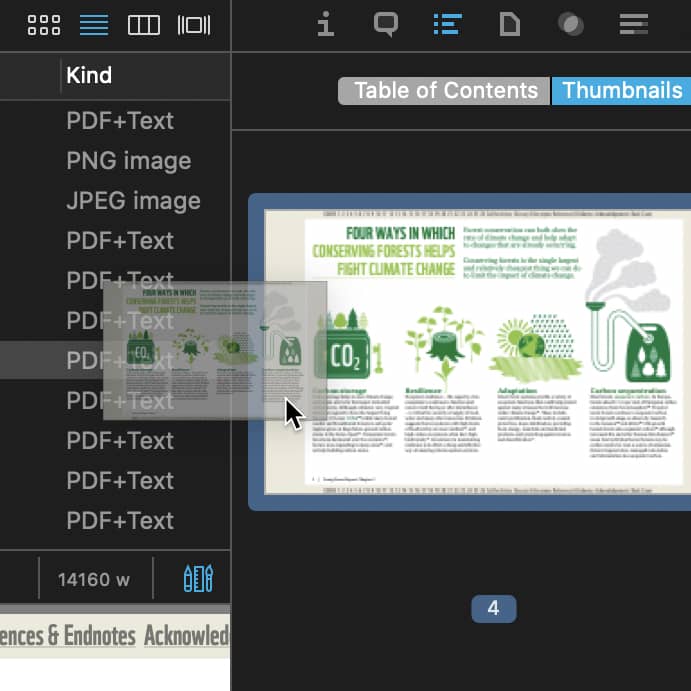How to Put Drag-and-Drop to Best Use

People new to Macs, especially Windows converts, often have questions about how to get data into DEVONthink. While there are a variety of methods we outline in the In & Out chapter of the help, one option is a long-standing Mac feature that makes this simple: drag-and-drop. Over the years Mac applications have been built to support dragging and dropping files or data between each other. DEVONthink is no exception. Here are a few examples you may not have thought of:
- In a web browser or when browsing web content in DEVONthink, click and drag an image to a group or the dock icon to import it.
- Another option with web content: click and drag a link on the page. Note: You need to click and hold the mouse button, then drag and release. This will create a bookmark of that link.
- Select a PDF page thumbnail in the Content > Thumbnails inspector and drag it to copy a particular page out of the document. This will work with multiple page thumbnails selected too.
- Another PDF option is available if you have multiple PDFs open: You can drag page thumbnails to insert pages from one to the other. This is most easily done if you have at least one PDF open in a document window.
- Select some text in a rich text file, then drag it to create a new rich text file containing those selected paragraphs. This can also be done with plain text, yielding a plain text document. Markdown will yield a plain text document when dragged from the source or a rich text file when dragged from the rendered HTML. HTML and formatted note content also yield rich text.
- If you have attachments in emails, click and drag the attachment to put it into your database. If you are running the Pro or Server edition and have emails within your databases, this drag can be done from those imported emails.
One thing to be aware of: When you drag from an application, it puts certain data “into the drag” to be accessed by other applications. The applications receiving the dropped data interpret it based on how the developer implemented accepting those drops. This means there can be times when data dropped may not come over in an expected fashion. Talk to the developers to see if there’s a bug or if it’s some behavior that can be addressed.
And as a nod to another great developer: If you find yourself using drag-and-drop a lot, check out the utility Yoink, about which we blogged before. It’s a handy little shelf you can drag to as a temporary holding tank, then drop to other applications at your leisure.
Note: This article deals with an older app generation. Interface elements, menu paths, and procedures could differ.
